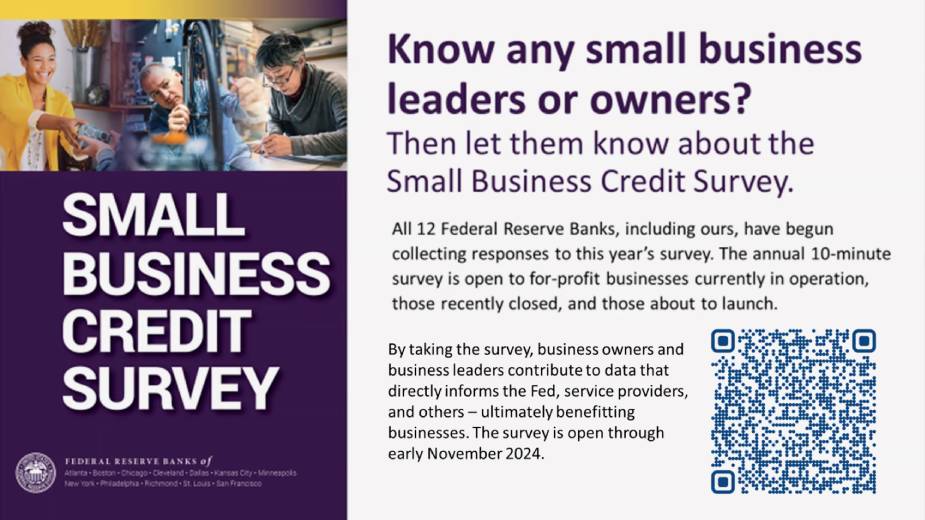FedTalk Discussion Highlights Small Business Challenges
CLEVELAND, Ohio – Citing the August 2024 Small Business Economic Strategy Report of the National Federation of Independent Businesses, Russell Mills, senior regional officer at the Pittsburgh branch of the Federal Reserve Bank of Cleveland, said business owner optimism has been declining.
During a Federal Reserve Bank of Cleveland FedTalk discussion Friday, Mills said the report shows the net percent of owners expecting higher real sales volumes fell by 9 points in August to a net negative 18%.
But whether a business is struggling to hire and doing well in 2024 can be based on the type of business it is.
Alfonso Cornejo, president of the Hispanic Chamber of Cincinnati, said those in construction are doing well.
Maggie Horne, director of the Small Business Development Center at Gannon University in Erie, Pa., said smaller manufacturing – as well as construction – seems to be growing or stabilizing after some sluggish years.
However, private sector health care services are struggling, Horne said. And the retail decline continues, she said, except for specialty shops that have the flexibility to adjust products and hours.
Merissa Piazza, lead policy analyst at the Federal Reserve Bank of Cleveland, said Ohio is performing similarly to the national business trends. Businesses with minority owners are reporting higher levels of operating losses and are in worse financial conditions. Piazza said the small business credit survey team has found that those who took disaster loans as they were maneuvering through the pandemic are more likely to be struggling now.
The FedTalk speakers discussed the challenge small businesses have when it comes to competing for employees.
Mills said 40% of all small business owners reported job openings they could not fill, according to the National Federation of Independent Businesses report.
While small businesses might not be able to pay as well, they can use flexibility to their advantage, Horne said.
Cornejo said small businesses can be flexible enough to make different policies for each employee and provide better work-life balance, which is important to younger workers.
Piazza also talked about some of the programs that could help small businesses set up retirement options for their employees.

The panelists discussed the importance of networking with other business owners and organizations such as the SBDCs or chambers of commerce. Owners can learn about programs they may not know about and get information about how to apply.
“We [at the SBDC] have a manufacturer we work with, and they shopped for the first time in years to different banks to find the best terms for them as they spent $1.2 million for new equipment,” Horne said, adding that was not something the company thought to do before. But after a Meet the Lenders event, the company felt more comfortable shopping its project with different banks.
Horne also talked about a variety of programs such as SCORE, which through the U.S. Small Business Administration, can provide mentoring to start-ups and small business owners.
The SBA also provides programs for women-, minority- and veteran-owned businesses seeking funding. Horne said local or regional programs can be available as well.
The speakers anticipate the Fed’s recent half-point rate cut could help small businesses going forward.
“Definitely, the higher interest rates were stopping people from being as aggressive in doing some expansion, considering potentially having a larger product line or creating new products,” Piazza said, adding those who didn’t feel comfortable six months ago are now starting to consider being more aggressive or planning for the near future.
“I do feel like it made an impact,” Piazza said.
Small businesses have been dealing with cost pressures such as the rise in the cost of supplies and inventory, but it also made them more innovative, Horne said. Cornejo added it has made businesses work together more.
Copyright 2024 The Business Journal, Youngstown, Ohio.



